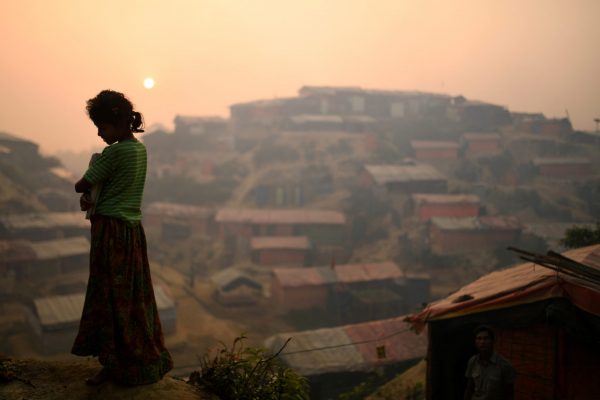Singapore will host the next ASEAN Defence Ministers Meeting (ADMM) in 2018. Building on established diplomatic channels among the region’s militaries, the forum offers an opportunity to tackle the Rakhine crisis and the stalemate in the Panglong peace conferences between Myanmar’s military and ethnic groups.
Since its birth over 50 years ago, ASEAN has become a central platform for regional diplomacy, and Myanmar has been a notorious litmus test for the strength of that diplomacy. Attempts to bridge policy gaps and find sustainable solutions in Myanmar faltered from when the country joined ASEAN in 1997 until 2008. And while Myanmar’s relations with ASEAN have improved over time, the recent outbreak of conflict and the grave humanitarian situation in Myanmar are raising concerns about regional stability at a time of increasing strain from competing global powers.
ASEAN disaster response activities have been a particularly successful avenue through which to build trust between the region’s civilian and military actors. ASEAN proved to be a lynchpin of diplomacy with the Tatmadaw in the aftermath of Cyclone Nargis in 2008, for instance, when it was able to facilitate humanitarian access to those affected.
Southeast Asian countries are demonstrating an increasing willingness to accept humanitarian assistance from fellow ASEAN states. ASEAN provided relief to those affected by the siege of Marawi and the Rakhine crisis in 2017. And in 2015 the aftermath of the Nepal earthquake saw ASEAN rapidly deploying military medical teams to provide relief.
The ADMM offers a platform for the region’s militaries to engage on both traditional and non-traditional security issues. The grouping’s seven designated areas of cooperation range from counterterrorism, cyber security and maritime security to medical aid, peacekeeping, humanitarian mine action and humanitarian assistance and disaster relief. This provides some indication of the variety of ways through which the ADMM could engage its members to provide humanitarian assistance in Myanmar.
Defence diplomacy is moving forward in the region and is becoming more actively engaged as a solution to regional crises. In 2015, the ADMM agreed to establish the ASEAN Militaries Ready Group on Humanitarian Assistance and Disaster Relief — a joint ASEAN military group that can be rapidly deployed to provide relief in the event of emergency. This demonstrates both the willingness and the capacity of the region’s militaries to address crises like that in Myanmar.
As an avenue that engages all ASEAN militaries including the Tatmadaw, the ADMM offers an established forum to negotiate with this key stakeholder. Regional mechanisms rely on trust and confidence-building measures to encourage participation in operational activities and deliver tangible results. This trust has taken time to develop since the establishment of the ADMM in 2006. But it now positions the ADMM with the unique capacity to draw upon its relationship with its member militaries to begin to alleviate the dire humanitarian situation in Myanmar.
If a durable solution is to be found to the Rakhine crisis and further afield in the Panglong peace conferences, active defence diplomacy through the ADMM will be needed. One way forward is to build on existing mechanisms and processes (such as the ASEAN Agreement on Disaster Management and Emergency Response and the ASEAN Humanitarian Assistance Centre), thereby making regional humanitarian efforts more efficient and effective. Recent reiterations by the ASEAN Chairman to deliver ASEAN humanitarian assistance to all displaced inhabitants without discrimination in Rakhine State constitutes a positive backdrop for concerted inter-agency efforts.
Observers will be watching the ADMM in Singapore for any further indications of progress in this respect.
Alistair DB Cook (@Beancook) is Coordinator of the Humanitarian Assistance and Disaster Relief Programme and Research Fellow, NTS Centre at the S Rajaratnam School of International Studies (RSIS), Nanyang Technological University, Singapore.

